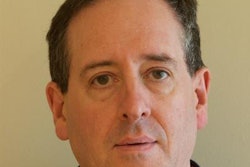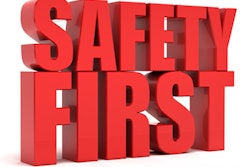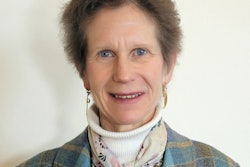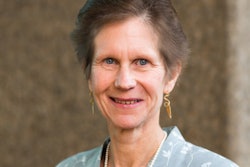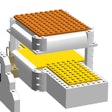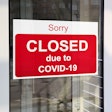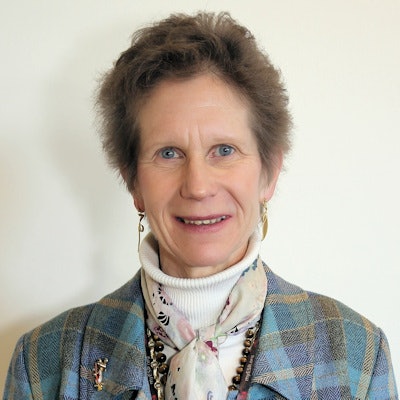
U.K. outsourcing costs have doubled in just three years, and a shortage of at least 1,600 radiologists is anticipated by 2022, according to the annual workforce report released on Wednesday by the Royal College of Radiologists (RCR). Urgent action is vital to cut this spending, said RCR President Dr. Nicola Strickland.
"The scale of the crisis in radiologist staffing cannot be overstated," she noted in a statement. "Scan outsourcing is not sustainable, and while we rely on radiologists from overseas to help keep NHS [National Health Service] imaging departments afloat, and the RCR wants the shortage occupation list to be broadened to help support services, international recruitment is not the answer either."
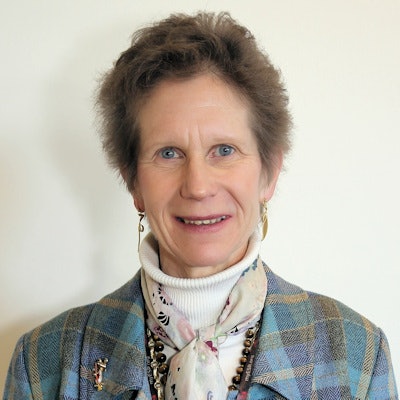 RCR President Dr. Nicola Strickland. Photo by Christof Pelz.
RCR President Dr. Nicola Strickland. Photo by Christof Pelz.To cope with the shortage of radiologists, NHS hospitals spent 116 million pounds (128.4 million euros) in 2017 on outsourcing patient scans, and the NHS bill for outsourcing scans continues to soar because imaging departments are "run ragged, without enough trained radiologists to handle the spiraling workload," Strickland added.
"The irony is that the amount spent on overtime scan reporting and contracting scans out last year would pay for more than enough fully qualified, in-house radiologists, if only the money were allocated to train them," she continued. "Retention strategies are also important. Our workforce census report recommends employers concentrate on working conditions and flexibility and it has been encouraging to hear the new health secretary's vocal commitments to helping the NHS keep its best people."
The key findings from the RCR's Clinical Radiology UK Workforce Census 2017 report include the following:
- The U.K. currently needs another 1,004 full-time radiologists, and by 2022 the shortfall will be at least 1,610, a third of the number of doctors needed to keep up with workload.
- In 2017, NHS hospitals spent nearly 30 million pounds (33 million euros) more on outsourcing scans and related overtime than in 2016 (88 million pounds, 98 million euros) and double the amount spent in 2014 (58 million pounds, 64 million euros), which is enough to cover the shortfall and pay for around 1,300 full-time consultant radiologists.
- Full-time radiologist numbers in Scotland, Wales, and Northern Ireland remained flat between 2012 and 2017.
- Although England saw a 15% increase in full-time radiologist numbers between 2012 and 2017, scan workload rose by 30%. This excludes other work done by imaging consultants, such as determining patient management at multidisciplinary team meetings, taking biopsies, and performing interventional radiology.
The report also shows that 10.3% of U.K. radiologist jobs remained vacant in 2017, with nearly a fifth of posts (18.4%) in Northern Ireland unfilled. More than two-thirds (69%) of unfilled NHS radiologist posts have been vacant for a year or more.
| Whole-time radiologists, outsourcing/overtime costs and vacancy rate per region | |||||
| Region | No. of whole-time equivalent consultant radiologists in 2012 | No. of whole-time equivalent consultant radiologists in 2017 | Vacancy rate of NHS consultant radiologist posts 2017 | Estimated NHS scan outsourcing/overtime cost in 2014 | Estimated NHS scan outsourcing/overtime cost in 2017 |
| U.K. | 2,997 | 3,390 | 10.3% | 58 million pounds (64 million euros) |
116 million pounds (129 million euros) |
| England | 2,444 | 2,828 | 10% | 47 million pounds (52 million euros) |
99.3 million pounds (110 million euros) |
| Scotland | 302 | 298 | 10.7% | 3.5 million pounds (3.9 million euros) |
4 million pounds (4.4 million euros) |
| Wales | 142 | 149 | 7.2% | 1.9 million pounds (2.1 million euros) |
4.9 million pounds (5.4 million euros) |
| Northern Ireland | 109 | 115 | 18.4% | 5.2 million pounds (5.8 million euros) |
7.7 million pounds (8.6 million euros) |
Outsourcing costs in every country have risen to meet demand, with English outsourcing and overtime going from 47 million pounds (52 million euros) in 2014 to 99.3 million pounds (110 million euros) in 2017. Welsh radiology has seen outsourcing and overtime boom by 157% in that same period, hitting 4.9 million pounds (5.4 million euros) in 2017, compared with 1.9 million (2.1 million) in 2014.
According to Strickland, "Diagnostic and interventional radiology is fundamental to so much of the NHS -- from getting a proper diagnosis to planning surgery to cancer care and trauma management. The fabric of medical and surgical care will collapse unless more is done to increase the number of home-grown radiologists. However, the obvious long-term, sustainable solution to our staffing crisis is to fund more trainee radiologists to become our future consultant workforce."
Radiology is a very popular medical specialty for young doctors, and four applications are received for every trainee post. Many hospital imaging departments desperately want to train up more radiologists, but they need health bosses to provide more funds, she concluded.
For more details about the report on the RCR website, click here.




